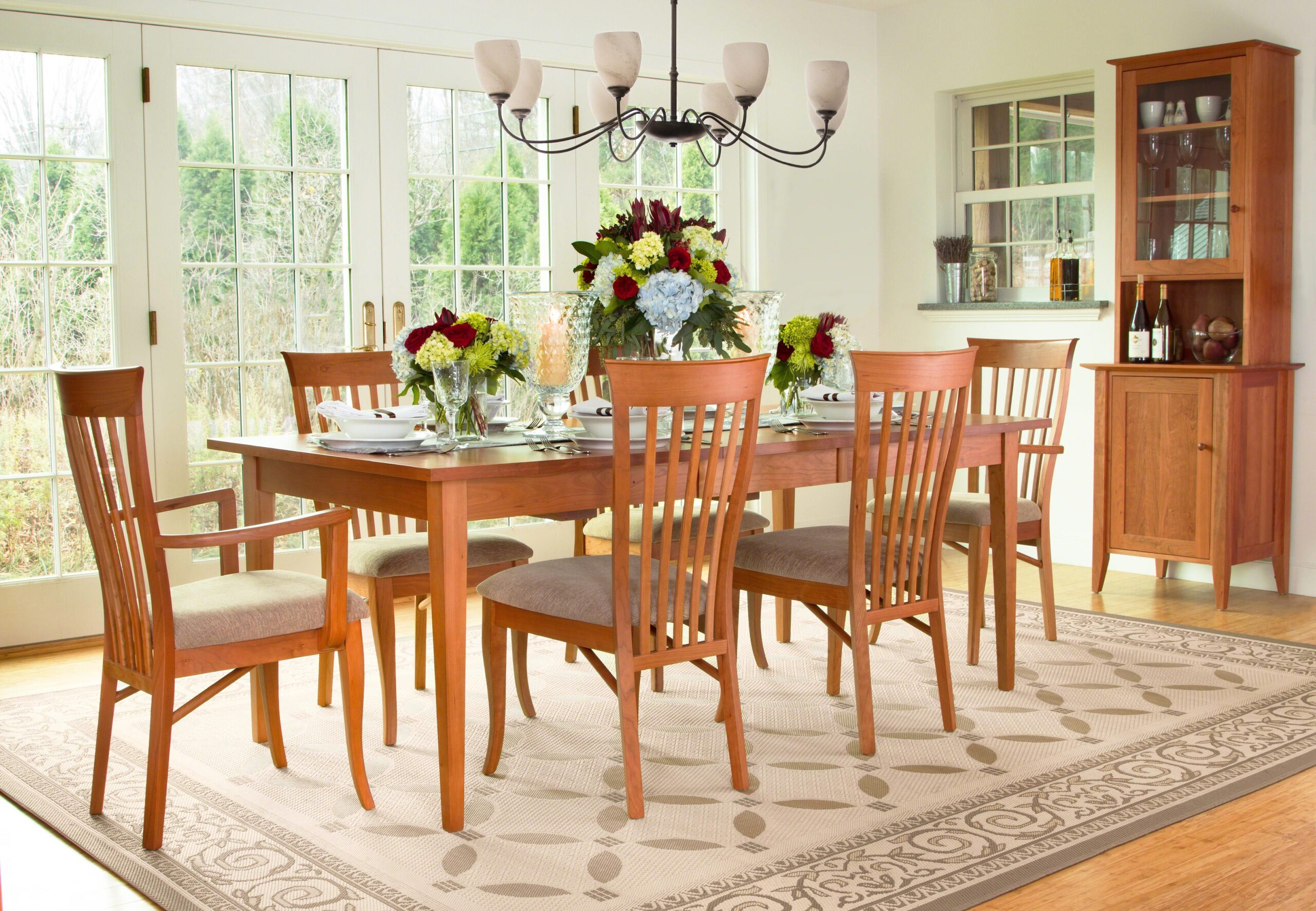Selecting versatile furnishing services are the first step to making your dining room more functional. A well-chosen set can include extendable tables, stackable chairs, and multi-functional storage units. These elements not only save space but also offer flexibility for different occasions. For example, an extendable table can be compact for daily use but expanded for hosting larger gatherings. Stackable chairs can be easily stored when not in use, freeing up space. Multi-functional storage units, such as sideboards with built-in wine racks or cabinets with adjustable shelves, can help keep the dining area organized and clutter-free.
Optimize Lighting
Lighting plays a crucial role in the functionality and ambiance of your dining room. Consider a combination of overhead lighting, such as chandeliers or pendant lights, and task lighting, like wall sconces or table lamps. Dimmable lights can create a versatile atmosphere, suitable for both casual family dinners and formal gatherings. Additionally, ensure that natural light is maximized by using sheer curtains or blinds that can be easily adjusted. Proper lighting not only enhances the aesthetic appeal of the room but also ensures that it is adequately illuminated for various activities, from dining to working or studying.
Incorporate Smart Storage Solutions
Effective storage solutions are essential for maintaining a functional dining room. Built-in cabinets, floating shelves, and storage benches can provide ample space for storing dining essentials, such as dishes, glassware, and linens. Consider furniture pieces that serve dual purposes, like a buffet table with drawers or a bench with hidden storage. Utilizing vertical space with tall cabinets or wall-mounted shelves can also help keep the room organized without occupying valuable floor space. Smart storage solutions ensure that everything has its place, reducing clutter and making it easier to access what you need.
Create a Flexible Layout
A flexible layout allows you to adapt your dining room to various activities and events. Arrange furniture in a way that promotes easy movement and accessibility. For example, placing the dining table in the center of the room can create a focal point while leaving enough space around it for chairs to be easily pulled out. Consider using furniture on wheels, such as bar carts or movable cabinets, which can be repositioned as needed. A flexible layout also includes having multi-purpose furniture, like a dining table that can double as a workspace or a sideboard that can serve as a buffet station during parties. This adaptability ensures that your dining room can accommodate different needs and functions seamlessly.
Use Area Rugs to Define Spaces
Area rugs can help define different zones within your dining room, adding both functionality and aesthetic appeal. Choosing a rug that fits under your dining table and chairs can anchor the space, making it feel more cohesive and inviting. Additionally, a rug can protect your flooring from scratches and spills, prolonging its lifespan. Opt for a durable, easy-to-clean material that can withstand the wear and tear of daily use. A well-placed area rug can also add warmth and texture to the room, making it more comfortable for dining and other activities.
Add Comfortable Seating
Comfortable seating is essential for creating a functional and enjoyable dining room. Choose chairs with cushioned seats and supportive backs to ensure that guests can sit comfortably for extended periods. Consider a mix of seating options, such as upholstered chairs and benches, to accommodate different preferences and maximize seating capacity. If space allows, adding a cozy armchair or two in the corners can create a relaxed, lounge-like atmosphere. Investing in high-quality, comfortable seating encourages people to linger and enjoy their time in the dining room, making it a more inviting and functional space.
Integrate Technology
Integrating technology into your dining room can enhance its functionality and modernize the space. Consider installing smart lighting systems that can be controlled via smartphone or voice commands, allowing you to adjust the ambiance effortlessly. Incorporate a sound system for background music during meals or parties, and ensure that there are accessible power outlets for charging devices or plugging in small appliances. A smart thermostat can help maintain a comfortable temperature, while a tablet or smart display can serve as a digital hub for recipes, schedules, and entertainment. These technological enhancements can make your dining room more convenient and enjoyable to use.
Personalize with Decor
Personalizing your dining room with decor that reflects your style and interests can make the space feel more welcoming and functional. Choose artwork, photographs, and decorative items that resonate with you and your family. Incorporate elements that add character, such as a unique centerpiece for the dining table, custom-made wall art, or a collection of vintage dishware displayed on open shelves. Adding personal touches, like a family gallery wall or a chalkboard for notes and messages, can create a sense of connection and make the dining room a more enjoyable place to spend time. Personal decor helps to create a space that feels truly yours, enhancing both its functionality and charm.

Maintain a Cohesive Color Scheme
Maintaining a cohesive color scheme can significantly enhance the functionality and visual appeal of your dining room. Choose a palette that complements the rest of your home decor and creates a harmonious atmosphere. Neutral colors, such as whites, grays, and beiges, can make the space feel more open and inviting, while accent colors can add personality and interest. Consistent use of colors across walls, furniture, and decor helps to create a unified look. Additionally, a cohesive color scheme can make it easier to update the room’s decor over time, as new pieces can be seamlessly integrated without clashing with the existing design.
Summary
Incorporating greenery into your dining room can enhance its functionality and ambiance by adding a touch of nature and freshness. Houseplants, such as ferns, succulents, or a small indoor tree, can improve air quality and create a calming environment. Consider placing plants on window sills, shelves, or as a centerpiece on the dining table. If natural light is limited, opt for low-light plants or high-quality artificial plants that require minimal maintenance. Greenery can also serve as a decorative element, adding color and texture to the space. Incorporating plants into your dining room design can make the space feel more vibrant and welcoming.











